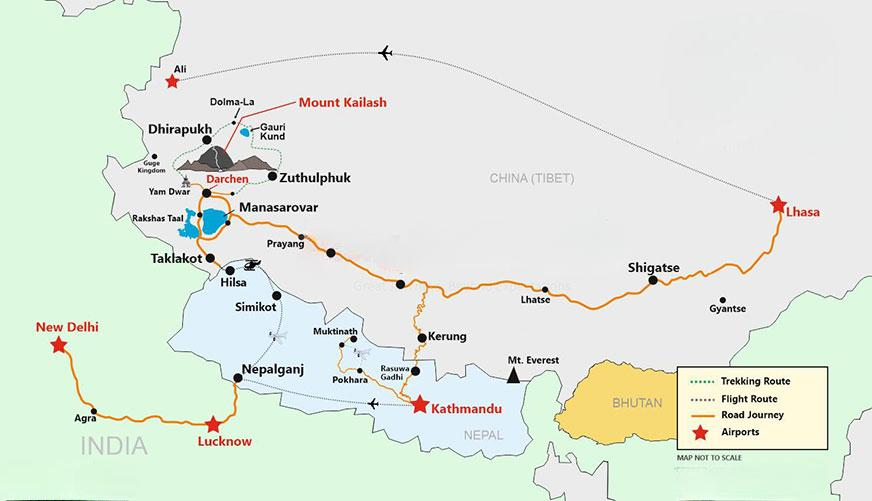Kailash Mansarovar Yatra | 07 Jul 2025
Why in News?
The Chief Minister of Uttarakhand flagged off the first batch of pilgrims for the revered Kailash Mansarovar Yatra from Tanakpur.
Key Points
- Kailash Mansarovar Yatra:
- About:
- The Ministry of External Affairs (MEA) organises the Yatra every year between June and September.
- The pilgrimage is conducted through two official routes: Lipulekh Pass in Uttarakhand and Nathu La Pass in Sikkim.
- Due to the Indo-China border dispute, Indian pilgrims were denied access to Kailash for nearly two decades.
- The Yatra resumed in 1981, under the MEA’s supervision and in cooperation with the Chinese government.
- Religious and Cultural Significance:
- Mount Kailash, revered as the abode of Lord Shiva, holds sacred value in Hinduism, Jainism, Buddhism, and the Bonpa tradition of Tibet.
- Hindus regard it as a spiritual energy centre, while Jains believe Rishabhdev attained Nirvana here; Buddhists call it Yungdruk Gu Tseg (Nine-Storey Swastika Mountain).
- Geographic Features:
- Mount Kailash (6,675 m) is located in Western Tibet, known locally as Kang Rampoche or Precious Jewel.
- South of Kailash lie Rakastal (Ravan Hrid), Mansarovar, and Gurla Mandhata peak (7,683 m).
- Lake Mansarovar lies at an elevation of 4,530 m, with a circumference of 90 km, depth of 90 m, and area of 320 sq. km.
- Rakastal (Ravan Hrid) has a circumference of 22 km and is connected to Mansarovar via a 6-km-long channel called Gangachhu.
- During the Himalayan uplift, four great rivers originated near Kailash: Indus (north), Karnali (south), Yarlung Tsangpo (east), Sutlej (west), which emerges from Rakastal.
- About:
- Lipulekh Pass (Uttarakhand): It is the shortest route to Mansarovar (50 km from the border), but rough terrain extends the trek to 200 km.
- It was the first Indian border post opened for trade with China in 1992, followed by Shipki La (1994) and Nathu La (2006).
- Nathu La Pass (Sikkim): This 1,500 km fully motorable route, opened in 2015, is among the world’s highest motorable roads and allows pilgrims to complete the journey without the need for trekking.
- Nathu La connects Sikkim with China's Tibet Autonomous Region (TAR) and is part of the ancient Silk Road.

